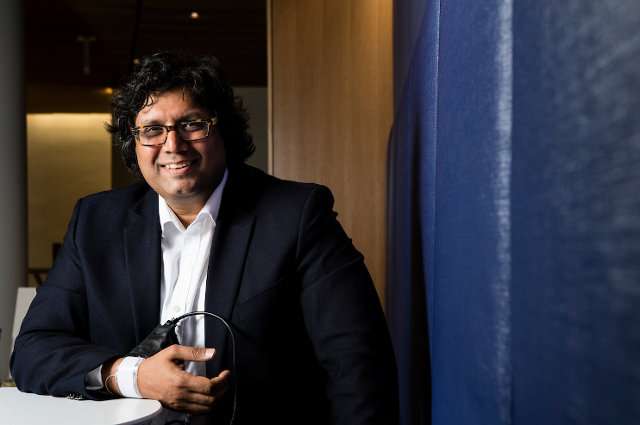Keeping tabs on hypertension

During his cardiovascular surgery training at Jackson Memorial Hospital in Miami in 2004, Mohan Thanikachalam recalls that at least once a week in the emergency room, he would see a patient in his early thirties or even late twenties with aortic destruction from undiagnosed high blood pressure.
The next step? An expensive, somewhat risky surgery with a long recovery time. "That's the thing—just taking a pill would have controlled those issues," said Thanikachalam, now a research assistant professor of public health and community medicine at the School of Medicine.
Almost 1.4 billion people worldwide have high blood pressure, including more than 100 million in the United States, and hypertension is the leading cause of heart disease and stroke across the globe.
But occasional cuff readings at the doctor's office—which can be affected by patient anxiety and other factors—aren't cutting it when it comes to effective maintenance and early intervention. Research has shown that continuous monitoring, including during sleep, is a better predictor of cardiovascular disease, while pressure variability over time can point to end-organ damage and dementia.
With all this in mind, Thanikachalam and a team from the Massachusetts Institute of Technology have spent three years developing a wearable Tactile Blood Pressure Imager (TBPI) with funding from the National Institutes of Health. "I made the decision to spend my time on this because it's going to create the greatest value," he said. "And there's no technology like this so far."
The TBPI is worn on the wrist, over the radial artery, and uses a sensor to capture skin-surface forces affected by blood in the artery, respiratory rhythm, and pulse rate. Proprietary algorithms incorporating these markers then provide a continuous estimate of heartbeat-to-heartbeat blood pressure. The TBPI is also worn overnight, and can be integrated with a mobile phone for remote monitoring by health-care professionals.
To validate the technology, the team inserted an arterial catheter in an animal model to measure blood pressure and then compared that to signals from the TBPI prototype strapped to the animal's leg. They then varied the blood pressure in the animals with drugs, which helped the researchers tweak the algorithm for different pressure ranges. In clinical studies, the team demonstrated that the TBPI estimates blood pressure in accordance with FDA standards. Next up, the TBPI will be tested on human ICU patients who also have intra-arterial catheters to monitor blood pressure.
While the current TBPI prototype is bulky, Thanikachalam is working on a more streamlined model with a product-development company. Tufts and MIT have both patented the work; Thanikachalam and team will establish a start-up, which will license the technology from Tufts and raise private capital.
In getting the device to market, Thanikachalam is focusing on two factors: affordability and physician buy-in. Most importantly, health-care providers need to feel confident that "this is a reliable technology and I can make treatment decisions based on it," he said.
If all goes according to plan, a person with hypertension—or at risk of hypertension—will be able to continuously monitor his blood pressure at home with the TBPI (marketed as the Vitrack), share the results with his doctor, and get ongoing treatment support. "This," Thanikachalam said, "is essentially empowering people to manage their disease."
Thanikachalam is also working with outside partners on other mobile phone-enabled portable devices to help patients manage diabetes, including a neuropathy analyzer, which tracks nerve function, and a retina camera, already in the hands of community health workers, which takes images of patients' eyes to look for signs of diabetic retinopathy caused by damage to the blood vessels in the back of the eye.




















